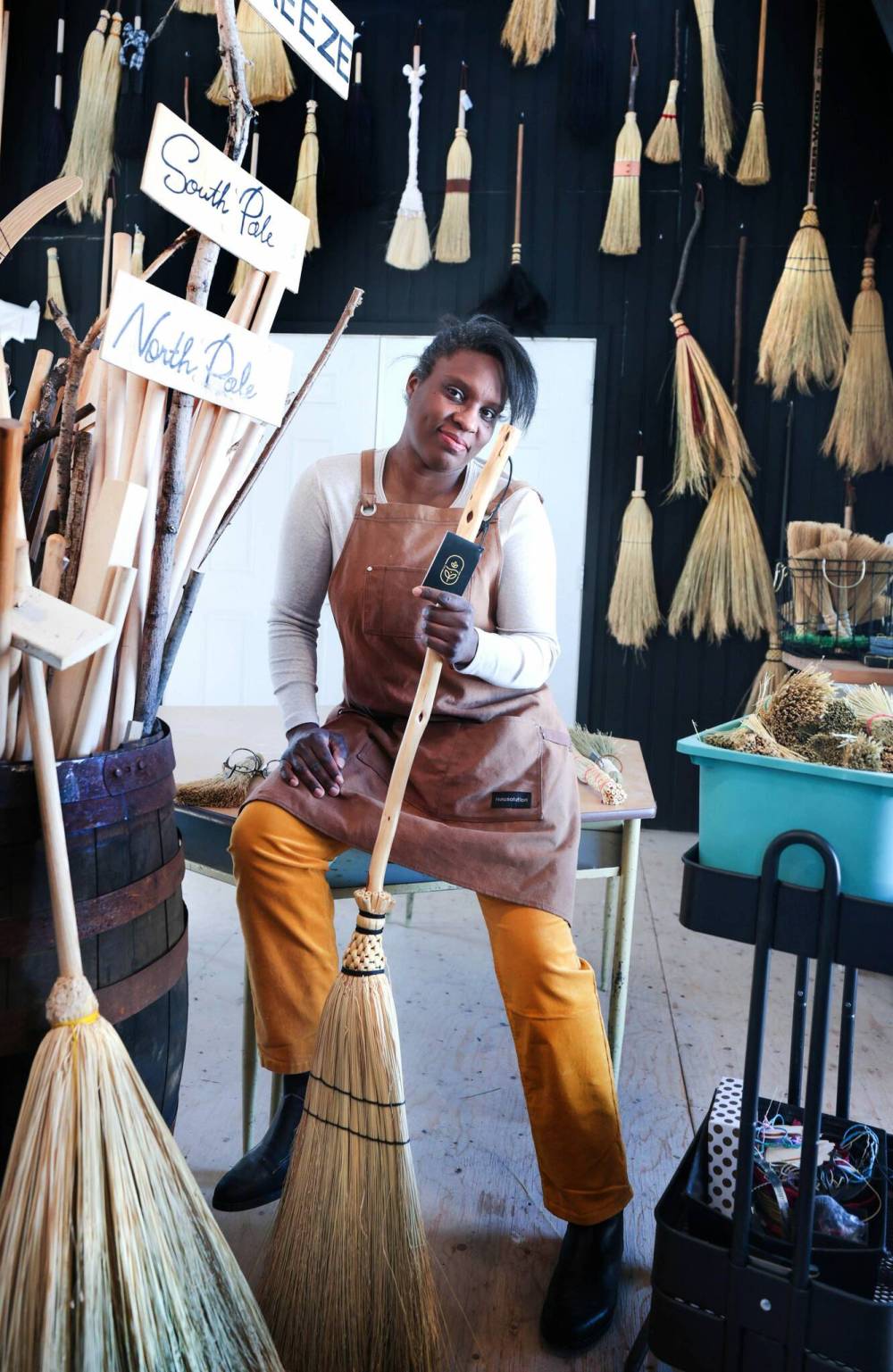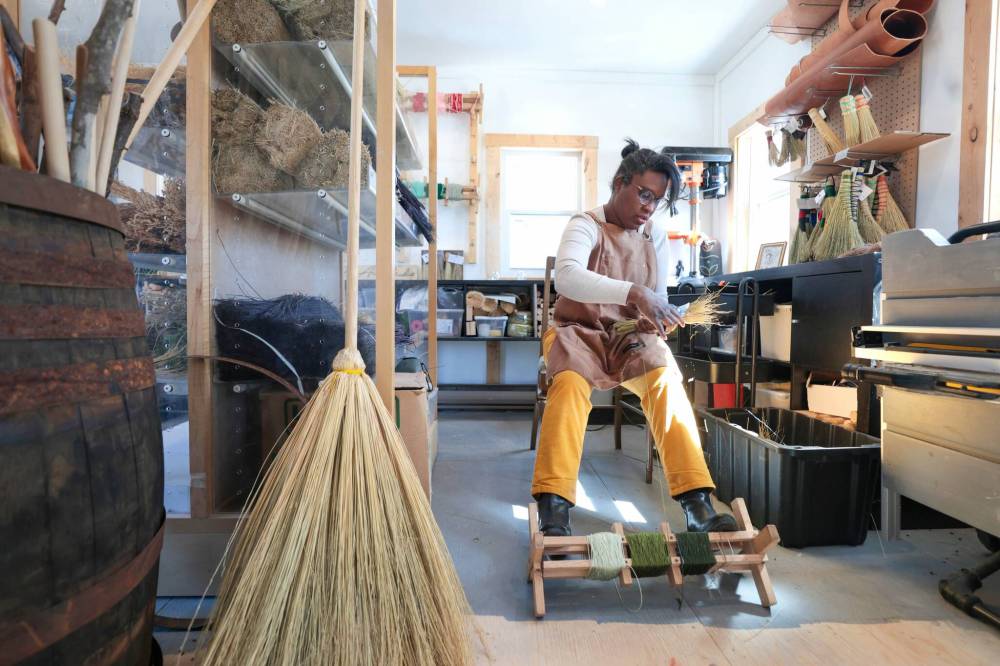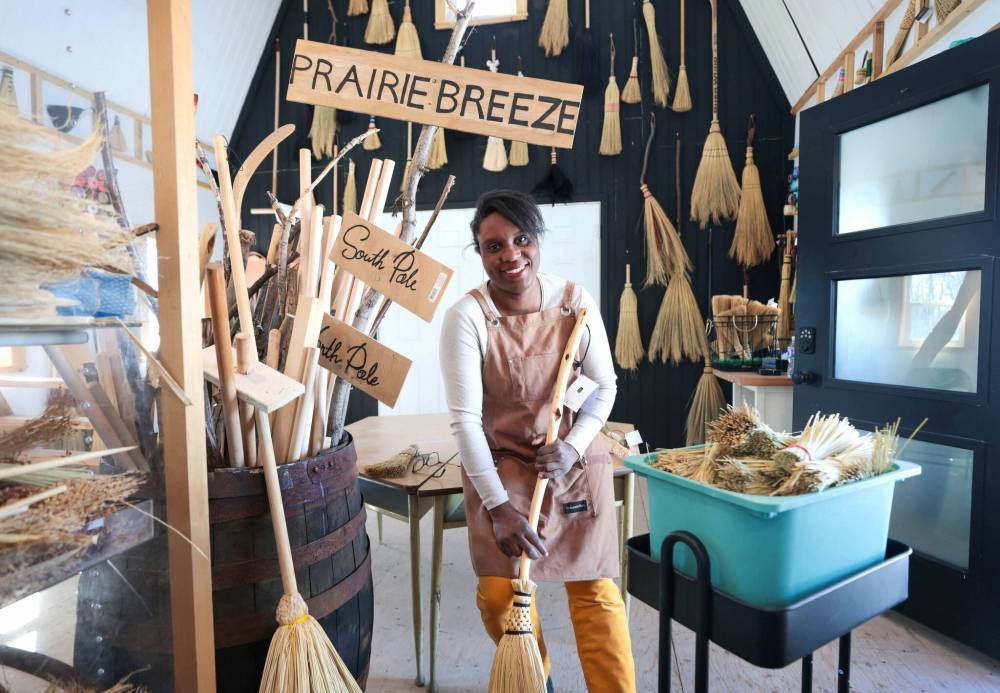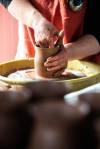Swept away Folk artist works to keep craft of traditional broom making alive
Read this article for free:
or
Already have an account? Log in here »
To continue reading, please subscribe:
Monthly Digital Subscription
$19 $0 for the first 4 weeks*
- Enjoy unlimited reading on winnipegfreepress.com
- Read the E-Edition, our digital replica newspaper
- Access News Break, our award-winning app
- Play interactive puzzles
*No charge for 4 weeks then billed as $19 every four weeks (new subscribers and qualified returning subscribers only). Cancel anytime.
Read unlimited articles for free today:
or
Already have an account? Log in here »
Amina Haswell wouldn’t have given a broom a second glance in the past. Like many, she never paid much attention to the household item often tucked away in the corner and mostly ignored until a mess occurs.
THE CREATORS
The Creators is a series that examines the “aha” moment behind ideas, images and inspiration, and the people behind them.
One day during a break on a work trip to Vancouver she saw throngs of people streaming in and out of a traditional broom shop.
Her interest piqued, Haswell, 45, joined the crowd and ended up buying a couple of brooms, marvelling at the handiwork.
She couldn’t get the Shaker-style brooms out of her mind and vowed to learn to make brooms and open a shop herself.
Photos by Ruth Bonneville / Free Press Prairie Breeze Folk Arts Studio owner Amina Haswell makes traditional, artisan-style brooms in her Balmoral workshop.
She took the plunge when on maternity leave for her second child, taking courses at two folk schools — Driftless Folk School in Wisconsin and John C. Campbell Folk School in North Carolina — where she mastered the art of broom-making.
Today, Haswell makes her own brooms and brushes in her Balmoral studio, Prairie Breeze Folk Arts Studio, which she established in 2019.
“I make traditional artisan brooms. The focus is to keep this long-lost art of broom making alive so I try and keep it as close to the traditional techniques as possible,” she explains.
“Average brooms last anywhere from 18 months to two-and-a-half years. Our brooms can last anywhere from 15 to 50 years; handed down from generation to generation. My whole premise is that I want people to get back to using things that have a long life span.”
Every broom in her shop is handmade using natural fibres. They come in a number of styles: Appalachian; Shaker; Edo-Japanese; Indonesian fan broom; and Japanese brush.
Some are for everyday use both indoors and outdoors, while others are matrimonial, made specifically for the symbolic wedding tradition of jumping the broom.
Ruth Bonneville / Free Press Haswell markets her brooms and brushes online and in-person.
For kitchen brooms, Haswell uses corn or sorghum vulgare, a flexible and extremely durable fibre, to make the sweep, while fancier ones, such as wedding brooms, have a sweep made from sisal, a smooth fibre with a silky texture.
“It’s very different to the broom corn. Sisal comes from the agave plant, and we also use it for our body brushes and dusting brushes,” she explains.
Handles are made in two styles — rustic natural-harvested and finished — using two different types of wood.
Amina Haswell, owner of Prairie Breeze, in Balmoral, Man. (Ruth Bonneville / Free Press)
For rustic everyday brooms, Haswell harvests sticks from her six-acre property in the summer and autumn, debarking and smoothing them down before drying them indoors for up to six months. The sticks have to be completely free of moisture before they can be used as handles.
“If it’s not dry then the broom part will fall off the handle as the wood expands and contracts. The sticks have to be kept in an environment away from the elements. This takes time. It would only take a day if I were to use a kiln but I’m doing everything the old way,” she says.
Maple hardwood, sourced from a mill in Quebec, is used for the finished handles.
Haswell sets aside three days a week to make her brooms, working eight hours daily to create around 21 brooms in a day. It’s a staggered process that goes through four or five stages, depending on the type of broom. She often takes on an apprentice during her peak season in spring and summer.
For Haswell, the broom is a great unifier.
“Almost every house has a broom and a dustpan, whatever its size,” she says. “Whether the home is a shanty hut in a favela in Brazil or a castle in Scotland.”
And just because an item is functional doesn’t mean it has to be ugly.
“I believe in beauty and function. My brooms are artistically driven and Earth-conscious. I am tying natural fibres with something that is artistic and functional that is connected to a home or a personal space,” she says.
av.kitching@freepress.mb.ca








